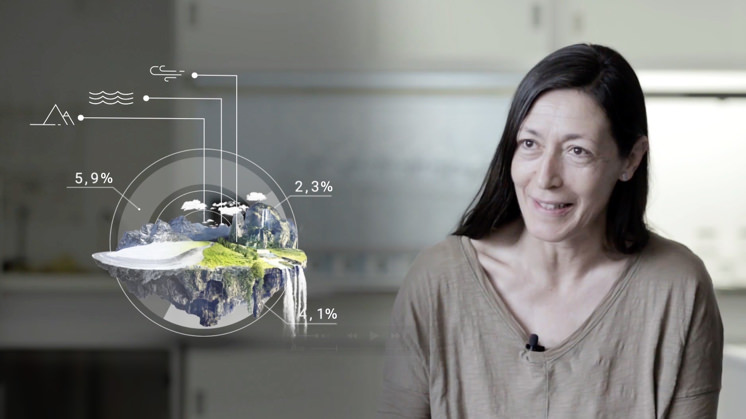Research vessel ship Hespérides: 'Sentinel' Project
"Some Persistent Organic Pollutants could last around 30 years"
Science and adventure often travel hand in hand. Begoña Jiménez has been on the trail of Persistent Organic Pollutants (POP) as far as the Antarctic. She is one of the 'Sentinel' scientists, a project set up to measure the accumulation and persistence in the environment of these substances that can affect human health.

Begoña Jiménez, Research Scientist at the Institute of General Organic Chemistry (CSIC) in Madrid. Video voice transcription [PDF]
Read the complete interview
Question: Where have you travelled recently and why?
Begoña Jiménez, Research Scientist at the Institute of General Organic Chemistry (CSIC) in Madrid: Last January I was fortunate enough to be able to participate in the Spanish Antarctic campaign and I was based at the Antarctic base, Juan Carlos I. I was very fortunate to be able to participate in this campaign as a researcher in connection with one of our research projects, a project called Sentinel, which is the abbreviated name of a project entitled Antarctica as a Sentinel of Global Pollution.
Question: What is this project about?
Begoña Jiménez: My work in this Antarctic campaign has consisted of collecting samples. To investigate the assumptions of our project we took a number of samples, to coin a phrase, by land, sea and air; that is, we collected air samples, atmospheric samples, we also collected soil samples, seawater sediments, plankton, etc. The sampling system varied depending on the environmental source.
Question: What kind of samples did you collect?
Begoña Jiménez: Our Sentinel project is particularly centred on persistent organic pollutants. As the actual name suggests, these are persistent organic compounds that are generally synthesised for industrial purposes, domestic or agricultural use, etc., and sometimes they appear unintentionally, for example in certain combustion processes. I believe that the whole world is familiar with municipal solid waste incinerators that can generate dioxins, and these dioxins, which are classified as persistent organic pollutants, are unintentional products, but let's say that this is the small minority. Some of these persistent organic pollutants are synthesised on a massive scale and apart from being persistent, they are concerning for their high toxicity, for their ability to bioaccumulate and biomagnify throughout the food-webs, and also for the fact they can travel long distances. From there our project has led us to the Antarctic, one of the most remote places on the planet, where we want to prove that these pollutants really do reach there. In addition we want to verify which environmental processes are distributing them to the different ecosystems.
Question: How many samples have the team collected and how much time do you spend analysing them?
Begoña Jiménez: The time spent on the campaign is usually three months which is split between the different people on the research project, over this time we can collect more than 400 samples. Once we finish the work at the bases and they are closed, the samples are stored on the Hespérides, which then has to return to Spain. I arrived back last week with all the samples we took on board the ship and now I am in the laboratories, which is when another phase of hard work begins, very different to working in the field, but hard insofar as the work can take up to two years to complete.
Question: Approximately how many POPs are known and which of them are the most dangerous?
Begoña Jiménez: We currently talk about figures in the order of more than 100,000 chemical substances synthesised by man, many of which are toxic and unfortunately, if we limit ourselves to persistent organic pollutants, it is particularly important to bear in mind that the Stockholm Convention established the famous Dirty dozen, twelve compounds considered to be highly toxic.
Question: How long can it take for one of these substances to be eliminated from the environment?
Begoña Jiménez: If we are talking about air, many of these pesticides, which are a POP or flame retardant, can be in the air for months. If we change the environmental matrix and think of a sample such as soil, there the persistence is much higher. So, to give a clearer example, we can talk of periods of around 30 years for a pesticide as well known as DDT.
Question: Can these substances affect people?
Begoña Jiménez: These substances can affect living beings, many scientific studies have demonstrated this, and among the most striking effects are alterations in the immune system, alterations in the reproductive system and, fundamentally, what is most worrying, are all the mutations in hormonal systems, which is why many of them are known as endocrine disruptors.
Hide interview
Is the quality of the air you breathe healthy?
How can we guarantee universal health and well-being?




